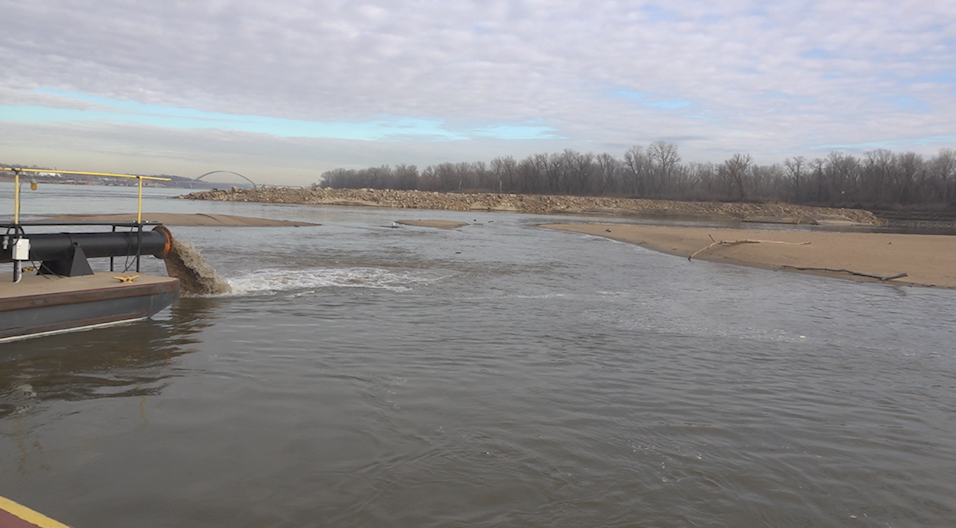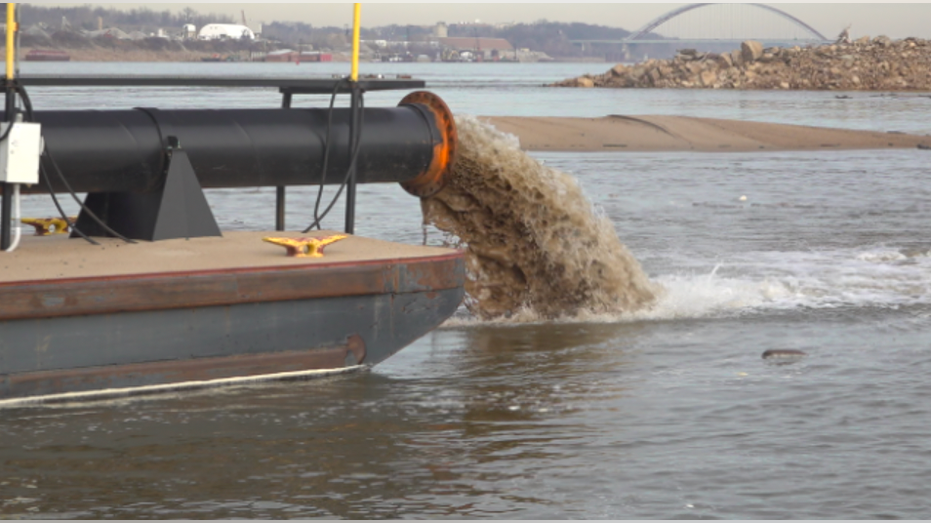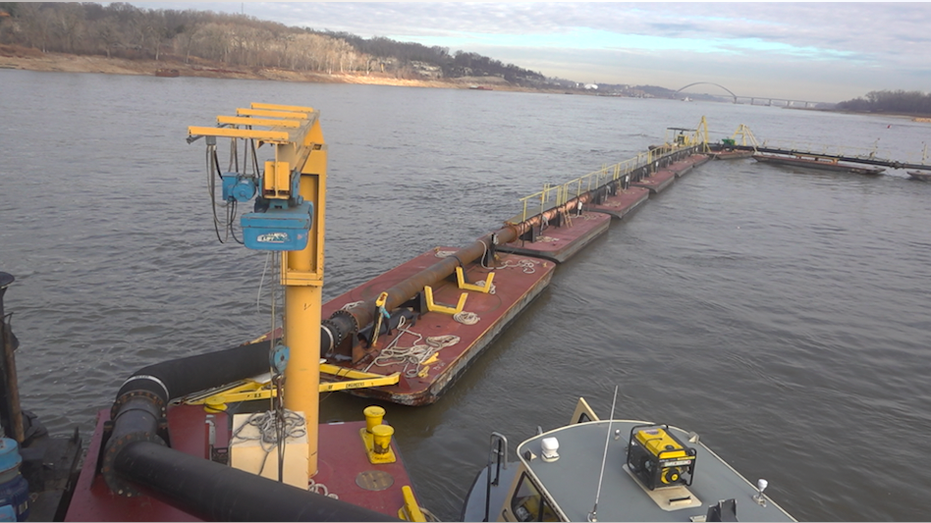
Historically low Mississippi River levels are impacting the supply chain.
The nation’s economy is taking a hit from historically low Mississippi River levels impacting the supply chain. Dredges are working 24/7 to maintain water levels for supply transport.
Commerce on the Mississippi River accounts for a majority of the country’s agriculture and grain exports. But because of the recent lack of rain, water levels are being compared to one of the worst droughts in 2012.
Each year, ships going through the Mississippi River transport tons of critical goods.
“Hundreds of millions of tons,” said St. Louis District Army Corps of Engineers Chief of Operations Lou Dell’Orco.

The Dredge Goetz on the Mississippi River in St. Louis, MO. (Fox News )
MISSISSIPPI RIVER DROUGHT HITS RECORD LEVEL, REVIVES SUPPLY CHAIN CONCERNS: REPORT
Shipping those goods like wheat, corn, crude oil, and more, requires a certain water level in the river. Dell’Orco says shippers need to be aware of current and future levels to determine how much they can load.
“Every foot that they don’t load is equivalent to about three to four thousands bushels of beans or corn so that’s that many more trips that need to be taken, and that much more product that’s going to take longer to move,” said Dell’Orco.
Dell’Orco says right now, the St. Louis area of the Mississippi River water levels are about five feet lower than usual.
“So what we’ve done since July is conduct continuous dredging operations to maintain the channel availability,” said Dell’Orco

The dredge sucking up sand and sediment before displacing it outside the channels.
BARGES GROUNDED IN MISSISSIPPI RIVER AS WATER LEVELS APPROACH RECORD LOWS
Dell’Oroco says the congressionally authorized sufficient level is a nine-foot deep channel by 300 feet wide. The Army Corps of Engineers identifies which parts of the river aren’t high enough, and then teams work with different dredgers.
“It could be a cutterhead dredge….It’s good for hard clay…agitates the bottom sucks up the material and discharges it, or a dustpan dredge where it literally sucks up the sand and sediment and displaces it outside the channels,” said Dell’Orco.
These dredges now working all day and night to maintain decent water levels. The Dredge Goetz Assistant Captain Adrian Loewenhagen says their work on the river is rewarding.
SUPPLY CHAIN IS THE FABRIC OF US ECONOMY: SHIPPING EXPERT

Pipeline leading to the dredge barge.
GET FOX BUSINESS ON THE GO BY CLICKING HERE
“Seeing all the hard work we’re doing for traffic to be able to go up and down the Mississippi River without any interference…there’s a lot of benefits to it and a lot of joys to what gets used out of it,” said Lowernhagen.
Weather experts predict the economic damage and supply chain impact from the Mississippi’s low water levels will be around $20 billion.

 Latest Breaking News Online News Portal
Latest Breaking News Online News Portal




